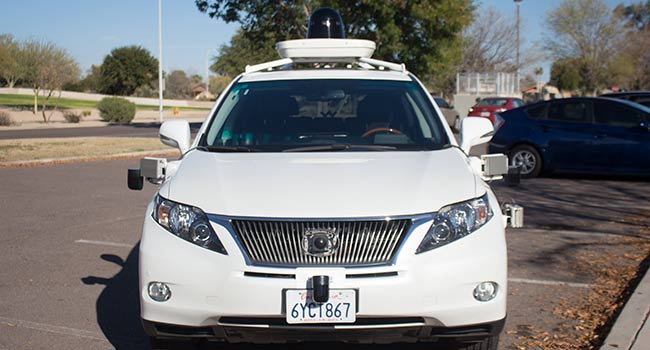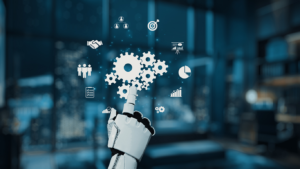It has become commonplace – a vehicle driving down the road with a big radar dome on the roof, cameras and such attached to the side, and a human behind the wheel just along for the ride. The Phoenix metro area has become a hotbed of testing self-driving autonomous cars. Soon they will move beyond testing to vehicle fleets, ride services, and eventually consumers, and this will cause permanent changes in manufacturing, transportation, and automotive industries. The impact will also be on more than just how we get around, it disrupts technology and high-tech business in three key areas: affordable sensors, powerful artificial intelligence (AI), and effective automation.
The development of the tech needed for self-driving cars will be disruptive for a simple reason, there are a lot of cars and people pay a lot for them. When there is volume and money, companies find the time and capital to really push the technology. In the past, much of the underlying technology used in sensors was being driven by military and aerospace applications. This moved it forward but there was not enough need in the market to drive rapid change. Just as smartphones have driven down the price and size of electronics in ways few people imagined, self-driving cars will do the same.
Sensors are the devices on a car that replace a human’s eyes, ears, touch and balance. When we drive, we use what we see, hear, and feel to make decisions. Self-driving cars use cameras, radar, microphones and GPS to gather the same information to make those decisions. The companies that make these sensors are investing millions in making their technology accurate, smaller and more affordable. Once those products are mature, they can be used in other high-tech applications like medicine, aerospace, industrial machinery and consumer electronics. So expect your smart crock pot to be smarter, moving beyond measuring and reporting temperature and time, to sensing when you approach it, how full it is, and how thick or salty your spaghetti sauce is.
The largest leap forward being driven by autonomous vehicles has been in the area of artificial intelligence. Next time you are at a stop light, think about all of the decision you make when the light turns green. Software needs to do that, and it is not easy. So dozens of new and very complex technologies are being developed to makes safe and smart decisions based on the information that sensors give the car. These approaches can be modified to be applied to medical diagnostics, financial analysis, basic scientific research and effective manufacturing automation.
Effective automation may have the biggest impact on people in the long run. The sensors and computer algorithms being developed for self-driving cars will be combined with existing robotic technology to drastically change the way we make things. This will make manufacturing cost-effective in the United States, it will reduce the cost of complex and sophisticated products, and it will completely change what the workforce looks like.
As self-driving cars make their way to becoming common place, the technology they require will drastically change many other parts of our world and the technology that surrounds us. The good news is you will be able to read about it and study it while your car is driving you around.
Silicon Desert Insider is a weekly blog published every Wednesday morning on azBIGmedia.com, about the local technology industry. If you have an idea for a piece for “Silicon Desert Insider,” please email AZ BIG Media Digital Editor Jesse A. Millard at jesse.millard@azbigmedia.com.




